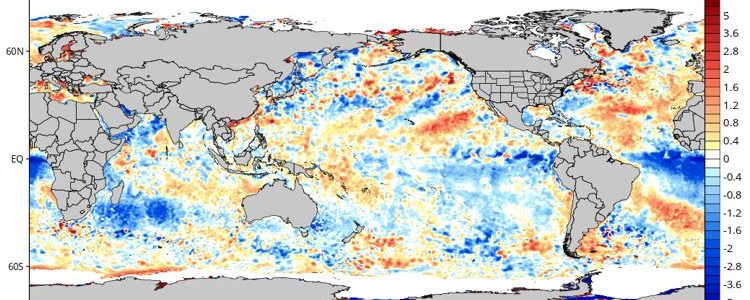
The first official Canadian crop estimates for the 2019/20 crop year were released last Wednesday by Statistics Canada, the national statistical office. Surveys of more than 13,100 farmers were conducted between July 4 and August 5 and farmers were asked to report their estimated area, yield and production of grains, oilseeds and special crops.
Adverse seasonal conditions have been blamed for a fall in production of wheat, soybeans and corn with either wet and cold weather in the east, or hot and dry weather in the west, taking its toll on anticipated production.
Total wheat production is expected to fall by 2.9 per cent, or 950,000 metric tonne, to 31.25 million metric tonne (MMT) compared to the 2018/19 season. However, this still comes in at 880,000 metric tonne, or 2.9 per cent higher than the five-year average. The fall is on the back of a 1.1 per cent decline in harvested area and a 2.1 per cent decline in anticipated yield to 47.5 bushels per acre (3.19 metric tonne per hectare).
Breaking the total wheat number down, spring wheat production is expected to be the largest crop in six years, up 1.17MMT (4.9 per cent) to 25.11MMT. Countering that increase is a 23.1 per cent decline in Durum wheat production to 4.42MMT and a 31.4 per cent fall in winter wheat production to 1.72MMT.
At 18.45MMT, Canada’s canola production is expected to be the lowest in four years and 3.9 per cent below the five-year average. This is a fall of 9.3 per cent, or 1.89MMT, compared to last season and was almost 1MMT below trade expectations. The main contributor to this drop was an 8.2 per cent tumble in seeded acres as farmers reacted to the ongoing trade dispute with China.
In the row crop sector, soybean yields are expected to fall by 5.4 per cent to 40.2 bushels per acre (2.70 metric tonne per hectare). The harvest area is expected to decline by 9.7 per cent to 2.3 million hectares leading to a production decline of 14.6 per cent to around 6.2MMT.
An anticipated increase in the corn area of 1.5 million hectares will not be enough to counter a 4.1 per cent decrease in estimated yield. Final production is forecast at 13.6MMT, a year-on-year reduction of 2 per cent and the lowest in five years. The culprit was cold, wet weather across the major producing areas at seeding time leading to a delayed planting and poor germination.
The big winner out of the decreased canola area is barley, with Statistics Canada expecting a 12.8% increase in harvested area to 2.71 million hectares. At this stage in the season, barley yields are estimated to average 66.4 bushels per acre (3.57 metric tonne per hectare), 2.2 per cent higher than last season. The upshot is a substantial increase in production this season to 9.64MMT, the highest since 2013.
Oats is a minnow in the global cereal picture. Nonetheless, Canada is a significant producer. Production is forecast to increase to 3.95MMT based on a 15.2 per cent increase in the area expected to be carried through to harvest. The actual seeded area came in at 1.46 million hectares, but only 79.4 per cent of the crop will be harvested according to Statistics Canada, with the balance either grazed out or cut for hay and silage.
It has been a grim year for Canadian farmers, as canola exports bore the brunt of the trade stoush with China. Earlier this year China halted imports of Canadian canola, citing pests in some shipments. Canada is the number one producer and exporter of canola in the world. Since the turn of the century, China has grown from a relatively minor market for canola to the world’s biggest importer.
The importance of canola to Canadian agriculture has expanded significantly over this same period. In recent years, China has been the biggest buyer of Canadian seed, purchasing up to 40 per cent of the crop. According to Statistics Canada, canola production contributes more than $26 billion to the Canadian economy each year.
The wheat story is the complete opposite to canola, with Canada’s share of total Chinese imports increasing to more than 60 per cent in the 2018/19 season, compared to just 32 per cent in the previous twelve-month period. At 1.9MMT, the total export volume to China was almost double the previous season and the highest since the 2004/05 marketing year.
Fortunately, the spike in wheat sales is partially compensating producers for the lower canola sales with the export gains coming at the expense of the United States (US) and Australia. US wheat exports to China have plummeted over the last twelve months after China imposed a 25 per cent tariff on US wheat.
In Australia, the drought on the east coast last year led to a substantial decrease in the exportable surplus and pushed Australian values above export parity. This resulted in decreased exports overall and a reduction in Chinese market share.
The weather has traditionally been the most significant influence on global grain production. Farmers across the world accept that it will always play the lead role in their fight for sustainability and profitability.
However, we have now entered a new era of tariff and no-tariff trade barriers. These will continue to significantly impact traditional international grain trade flows as Canadian farmers have discovered to their chagrin in 2019.
Call your local Grain Brokers Australia representative on 1300 946 544 to discuss your grain marketing needs.
















